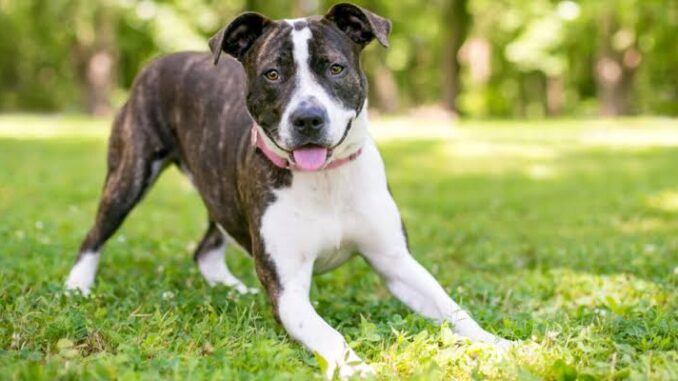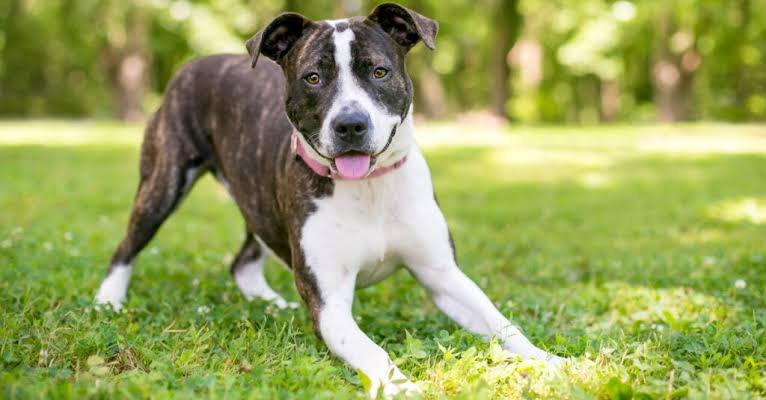
Guide to Understanding Dog Body Language: Understanding your dog’s body language is essential for a healthy, trusting relationship. Dogs can’t speak our language, but they communicate clearly through body signals.

Every ear twitch, tail wag, or posture change can be a window into their emotional world. This guide breaks down canine body language so you can better connect with your furry companion.
Guide to Understanding Dog Body Language
1. Why Dog Body Language Matters
Dogs are masters of non-verbal communication. While they do bark, growl, whine, or whimper, most of what they convey is through their bodies. Reading those signs correctly helps prevent misunderstandings, avoid aggression, and meet your dog’s emotional needs.
Misinterpreting dog body language is one of the most common reasons for dog bites or behavior issues. A wagging tail doesn’t always mean a happy dog, and a growl isn’t always aggression sometimes, it’s just communication.
2. The Major Body Parts Dogs Use to Communicate
A. Tail
Tail position and movement are some of the most recognizable signals, but also the most misunderstood.
- High and stiff tail (especially with a slow wag): Alert, possibly agitated or dominant. The dog may be assessing a threat.
- Tail straight out or slightly down: Neutral or curious.
- Low or tucked tail: Fear, anxiety, submission.
- Fast, loose wag with full body movement: Happiness, excitement.
- Stiff wagging (usually high): Alertness or agitation, especially when combined with stillness elsewhere.
B. Ears
Dog ear position varies by breed, but changes in angle or movement tell a lot.
- Ears forward: Alert, interested, or curious.
- Ears sideways or slightly back: Friendly, submissive, or relaxed.
- Pinned back tightly against the head: Fearful, anxious, or defensive.
- One ear up, one down (especially in puppies): Confusion or trying to assess a situation.
C. Eyes
Dogs’ eyes can show tension, softness, or fear.
- Soft eyes (normal size, slow blinking): Relaxed and comfortable.
- Hard stare or whale eye (seeing the whites): Warning sign; dog is uncomfortable, scared, or guarding something.
- Squinting or avoiding eye contact: Submission or fear.
- Wide eyes with dilated pupils: Anxiety, fear, or overstimulation.
D. Mouth
Dogs use their mouths expressively — and not just for barking.
- Relaxed jaw, open mouth, tongue out (like panting): Happy or at ease.
- Lips drawn back slightly with tongue flicks: Appeasement, stress, or uncertainty.
- Yawning (out of context): Anxiety or self-calming gesture.
- Growling or baring teeth: Threat display or warning — respect this signal.
- Lip licking (not after eating): Discomfort or nervousness.
E. Body Posture
A dog’s overall stance can be a big clue.
- Loose, wiggly body: Friendly, playful, confident.
- Stiff, upright stance: Alert, on edge, or asserting dominance.
- Lowered body or crouching: Fear or submission.
- Rolling onto back with exposed belly: Trust or submission. May be an invitation for a belly rub — or not.
- Turning away or showing side: Avoidance or peaceful intent.
F. Hackles (raised fur on shoulders/back)
Raised hackles are often involuntary — like goosebumps in humans.
- Hackles up: Arousal — this could be fear, excitement, or aggression. Context is crucial.
3. Emotional States and How They Look
Let’s explore common emotional states and what body language corresponds to each.
A. Relaxed and Content
- Soft eyes, relaxed mouth, ears in neutral position.
- Tail down or gently wagging.
- Body posture is neutral or slightly leaning toward a person.
- May lie on one side or curl comfortably.
B. Excited or Playful
- Play bow (front legs down, rear up).
- Bouncing or zooming.
- Mouth open, possibly barking in short bursts.
- Wagging tail, sometimes in circles (“helicopter wag”).
C. Fearful
- Crouching, ears back, tail tucked.
- Avoiding eye contact, trying to retreat.
- Lip licking, yawning, trembling.
- May growl or snap if cornered.
D. Aggressive
- Stiff body, hard stare.
- Tail high and bristled, little to no wagging.
- Ears forward, mouth tight or teeth bared.
- Growling, barking, lunging.
E. Anxious or Stressed
- Pacing, panting excessively (not from heat).
- Whining, licking lips, shaking off as if wet.
- Seeking comfort, hiding, or clinging to owner.
- May show “displacement behaviors” like yawning or scratching.
4. Common Misunderstandings
Myth 1: A wagging tail means a happy dog.
Truth: Not always. Dogs wag tails when aroused — that could be excitement, stress, or aggression. Look at the whole body and the tail’s height and speed.
Myth 2: Dogs roll over because they want belly rubs.
Truth: Rolling over can be a sign of submission or appeasement, not an invitation to touch. Gauge the dog’s comfort level first.
Myth 3: Growling is bad and must be punished.
Truth: Growling is communication. It tells you the dog is uncomfortable. Punishing growling removes the warning and can lead to sudden, “unprovoked” bites.
5. Reading Context Is Crucial
Never rely on a single signal. A wagging tail could mean happiness — or stress. A dog may yawn because it’s tired — or stressed. Always assess:
- The environment
- The dog’s overall body posture
- Changes from their baseline behavior
A dog on a noisy street yawning with ears back is likely stressed. The same yawn at home, on a comfy couch? Probably just tired.
6. How to Respond to Your Dog’s Signals
- Give space when your dog shows fear signals. Don’t force interaction.
- Reward calm, relaxed behavior. Reinforce states of ease.
- Avoid punishment for growling or lip curling. Instead, back off and identify the stressor.
- Engage playfully when invited. Respect when your dog withdraws.
- Use positive reinforcement to encourage confidence.
7. Dog-to-Dog Body Language
Dogs also communicate richly with each other.
Friendly greetings:
- Loose posture
- Curved approaches (not straight on)
- Play bows, mutual sniffing
Conflict avoidance:
- Looking away
- Sniffing the ground
- Sitting or lying down
- Yawning or shaking off
Escalation signals:
- Hard staring
- Stiff posture
- Growling, lip curling
- Lunging or snapping
Supervise dog introductions carefully and allow space for breaks.
READ ALSO: How to Prevent Obesity in Cats and Dogs
8. Puppies vs. Adult Dogs
Puppies often give exaggerated, clumsy signals. Their play can look rough but usually involves:
- Bouncing, yipping, floppy body movements
- Rolling over frequently
- Submissive gestures like licking older dogs’ mouths
Older dogs often teach puppies boundaries, using growls or ignoring them. This is normal, and respectful pups learn quickly.
9. Cultural and Breed Differences
Some breeds have body traits that affect their signals.
- Huskies and Akitas have curled tails, so it’s harder to tell tail position.
- Bulldogs or Pugs may not show facial expression clearly due to wrinkles.
- Dobermans with cropped ears may appear more alert or intense.
- Hairy breeds may need grooming around eyes and ears to read signals clearly.
Know your breed’s limitations and learn their unique “language.”
FAQs
My dog yawns a lot around new people. Is that normal?
Yes, if the yawns occur in social or new situations, they’re likely stress signals. It’s your dog’s way of calming themselves or showing they feel unsure.
Why does my dog roll on their back when I scold them?
This is a submissive gesture, not guilt. Dogs don’t feel guilt the way humans do — they’re showing deference or trying to defuse tension.
Should I stop my dog from growling?
No growling is a warning. Punishing it removes an important communication tool. Instead, learn what caused the discomfort and work on that.
My dog wags their tail but still growls. Why?
Tail wagging doesn’t always mean happiness. Your dog could be conflicted or overstimulated. Pay attention to other body signals.
What does it mean when my dog turns their head away when I talk to them?
This is often an appeasement gesture your dog is showing they don’t want conflict. It can also mean they’re overstimulated or confused.
Can I teach my dog to use body language differently?
You can shape behaviors (like calming signals) with training, but natural body language is largely instinctive. Focus on recognizing it, not changing it.
What’s the best way to approach an unfamiliar dog?
Always let the dog come to you. Avoid eye contact, turn sideways, and keep your movements slow. Watch for signs of invitation like loose body posture or sniffing.
Leave a Reply
You must be logged in to post a comment.